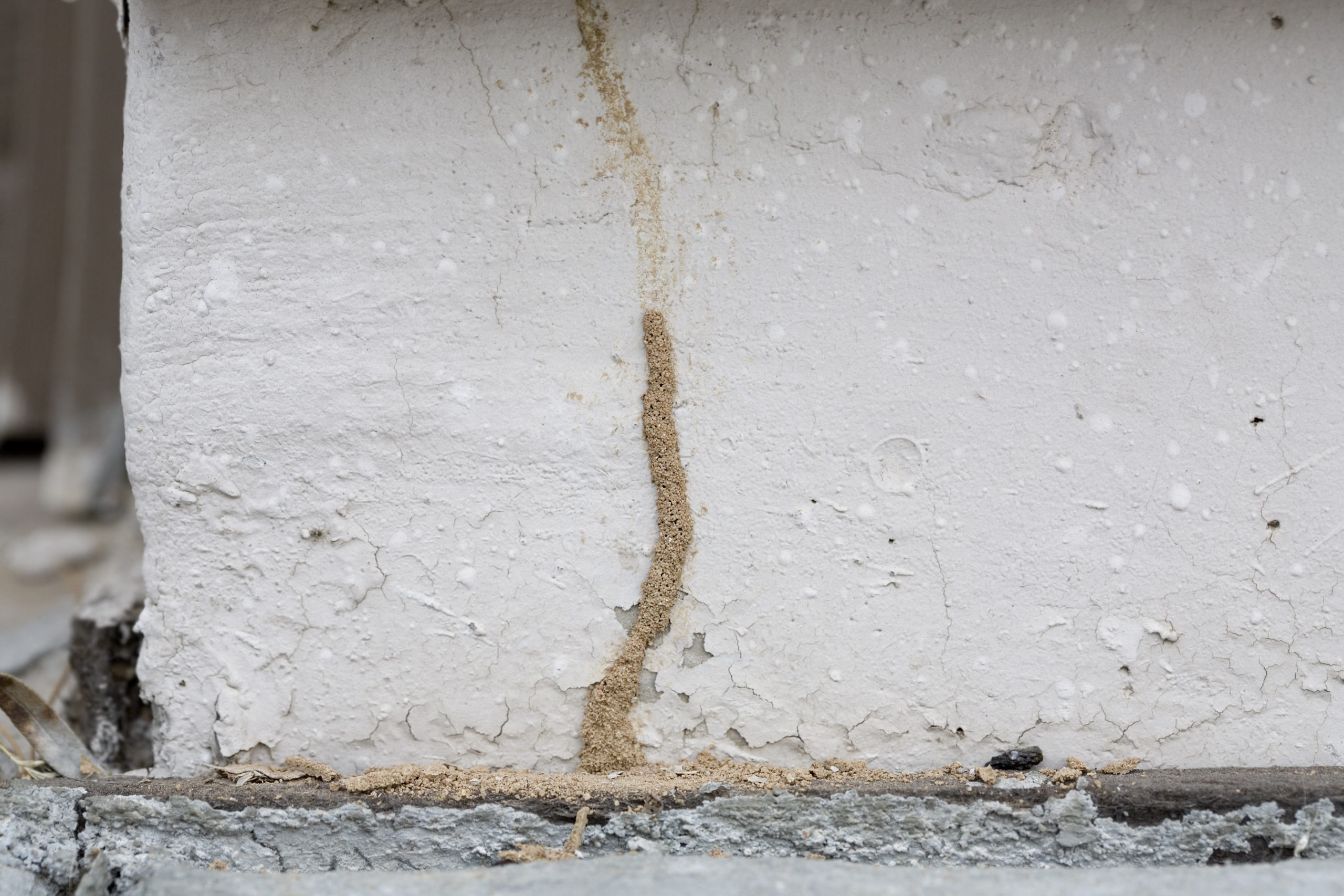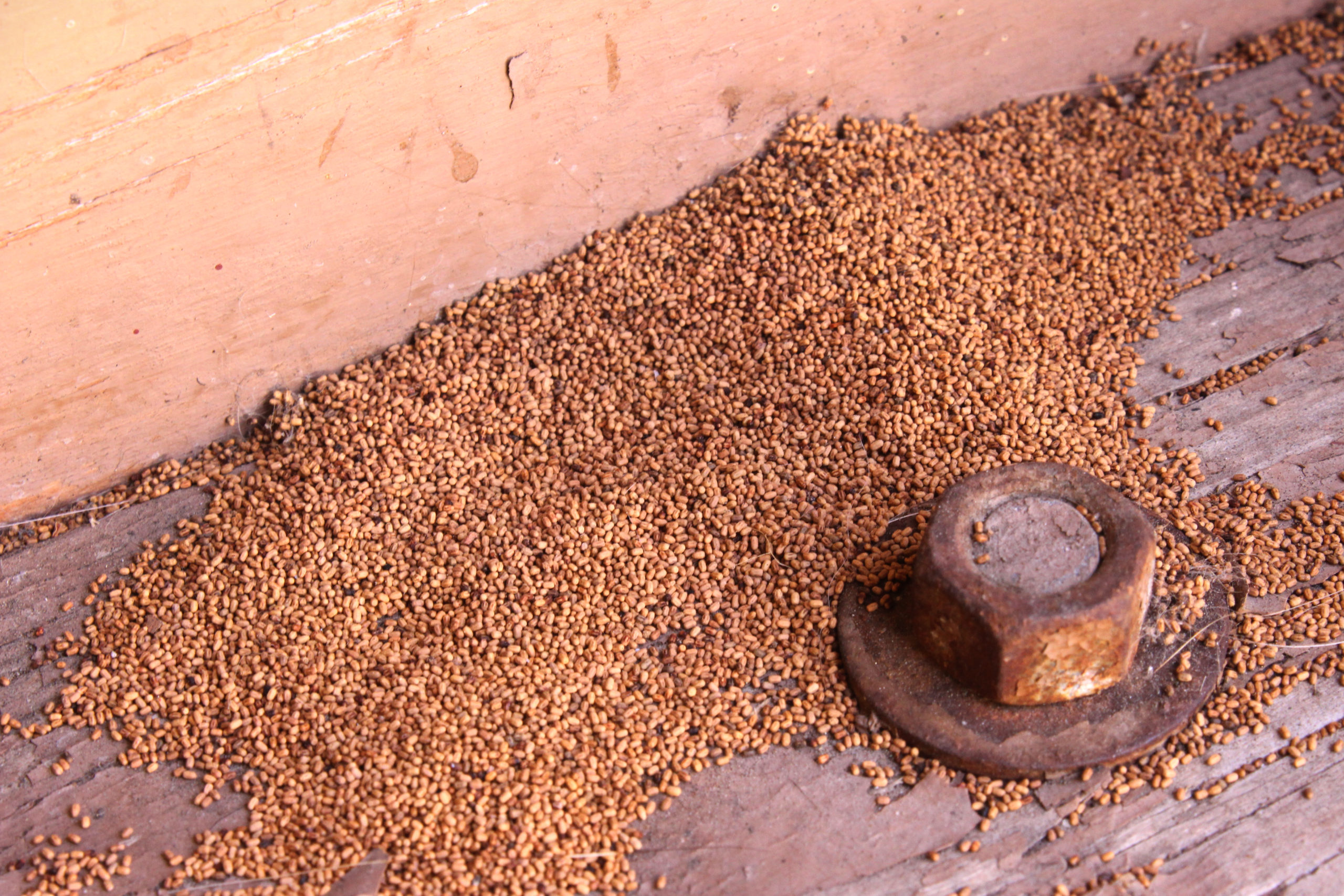The Truth About Termites
The Truth About Termites
Termites are an expensive pest. Not because they are expensive to treat, but because they can cause structural damage costing thousands of dollars to fix. A common fear of homeowners is that they will not be able to recognize the signs of a termite infestation before it’s too late, since the pests bury themselves deep inside a home’s framework. But there are many signs that termites are feasting on a home, and they should all be reason to call pest control to take care of the problem before it’s too late.
What Attracts Termites?
Before we discuss the signs of an infestation, it may be helpful to know what termites are drawn to in the first place. Termites have pincers at the front of their heads and they are quite light in color, likely because they spend most of their time deep inside wood and away from the light. The simple answer is that termites are mainly attracted to moisture and wood. But unfortunately, just like most pests, there is no one thing that termites are exclusively drawn to. They will feed on any cellulose material, which includes wood, paper, cardboard, and even fabrics. The cellulose is useful for feeding a colony and the egg-producing queen, so it is their main priority in food-searching. They are especially drawn to moist environments with high humidity levels, so homes that are not well-maintained, have water damage, or have a leaky roof may be more susceptible to a termite infestation. Additionally, if you have wooden beams or furniture in your home, that can also attract termites.
It’s important to keep your home dry and free of moisture, and to inspect wooden objects for signs of damage. Termites can survive even the coldest of winters since they burrow deep within the wood, so there is unfortunately no climate safe from these pests. If you suspect that you have a termite infestation, it’s important to address the problem as soon as possible.
Wood Damage
Another sign is damage to wood. Termites feed on the cellulose in wood, so they can cause significant damage to your home if left untreated. Look for holes or tunnels in wood, as well as areas where the wood has been eaten away. You can also tap the wood and see if it sounds more hollow compared to the other wood in the home. Soft wood that can be effortlessly morphed is another sign. Termites eat away at the wood from the inside out, so you may notice that the door frames or window casings are warping or that there is significant damage to the wooden beams in your home.
Wood rot is a possible cause if there are no other signs of termites, but the giveaway that the reason is termites is the appearance of dried dirt or mud near the wood damage. An official inspection is still a good idea so that you know what issue is at hand.
Mud Tubes

A common and major sign of termites is the presence of mud tubes. These are thin tubes made of mud that termites use to travel between their nest and the food they are eating. Since these paths are made of wood and soil, they are quite solid and clearly visible, especially if the mud tubes are on a light colored section of the house. The tubes usually run up the side the house and split into different paths, starting near the foundation. They are also found around plumbing and support beams.
A great way to tell if there is an active termite infestation is to break off a small piece of the mud tube, about one inch long. Then keep watch over the gap over the next couple of days. If it is repaired or termites are seen crawling between the tubes, the infestation is very much active. If nothing happens to the gap, either the infestation is no longer active or the termites have relocated to a new area of the home. It is still a good idea to remain wary and look for other signs of infestation. Pest control is always a great option, even when no live termites are seen, as they can inspect the mud tubes and confirm whether or not they are active and have spread to other areas.
Dried Mud Spots
Termites clearly like to use dirt and soil in the making of their burrows as evidenced by the previous point. These spots are much smaller than the tubes, but they are made of the same material and are still clear signs of termites since this is their signature move when burrowing. To restrict the amount of outside air that comes into their nests, termites use dirt and soil to patch any holes that they make leading to the outside world. If you are extra curious, you can scrape away one or two spots to see if a termite appears or if it is repaired soon.
Sunken Spots
Since termites eat cardboard, they can enjoy the cardboard covering just above the sheetrock layer but beneath the surface. This causes a sunken effect on the areas of the wall that the termites are gathering behind. They also eat wood paneling if it is in the home. An inspection by a professional will determine if the root cause is termites, or if there is something else causing damage to the home.
Droppings

A common guideline for determining if pests are in the area is finding droppings of some kind. Termite droppings, or frass, look like small wood pellets that are usually left in one large pile outside the tunnels. The termites like to keep a clean home just like we do, so they push the frass out of holes in the tunnel, which causes them to pile up outside the holes. The piles can look like sawdust to the naked eye.
Winged Termites
Finally, you can look for evidence of winged termites. These termites are known as swarmers, and they will leave the nest to mate. Swarmers are the reproductive stage of the termite and they are released from the colony when they reach maturity. They are attracted to light and will often be found near windows or doors. Since they shed their wings once they are finished flying, a pile of wings is another clear (albeit creepy) sign of termites. The sighting of any swarmers is reason to call pest control, as the sole purpose of swarmers is to mate and create a whole new colony.
Call Pest Control Immediately
If there are any of these signs, especially more than one, it means the infestation is still active and needs to be addressed before there is too much damage to the home. It’s important to call a pest control professional right away to assess the situation and recommend the best course of action. Termites will not leave a home easily once they find the wood they like, so professional help is almost always required to get rid of these pests. Heat treatments are often used against termites since they have proven to be the most effective, but talk to your technician to find out which option is best for you and your home.
Citations
Cooper, G.F. (2021, July 14). 7 signs you might have a termite infestation. Family Handyman. Available at https://www.familyhandyman.com/article/termite-signs/ (Accessed on February 24, 2022).
Layton, Dr. B. (n.d.). Signs of termite infestation. Mississippi State University Extension. Available at http://extension.msstate.edu/content/signs-termite-infestation (Accessed on February 24, 2022).
This Old House Reviews Team. (n.d.). How to tell if you have termite damage. This Old House. Available at https://www.thisoldhouse.com/pest-control/21272980/how-to-tell-if-you-have-termite-damage (Accessed on February 24, 2022).
Request a Free Quote Today
(We do not share your data with anybody, and only use it for its intended purpose)


